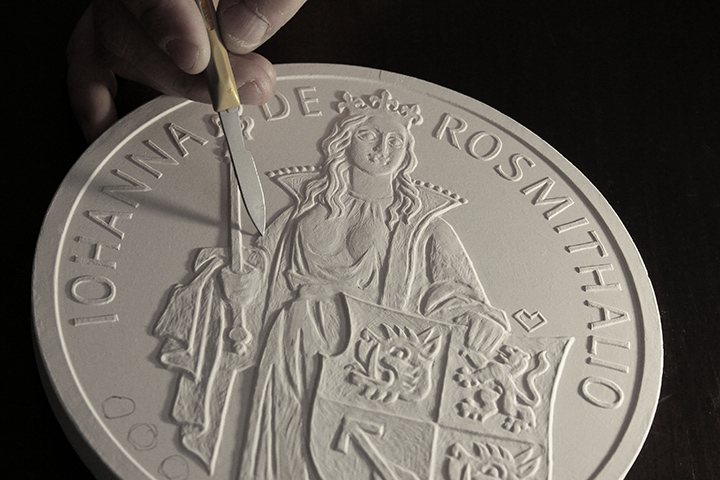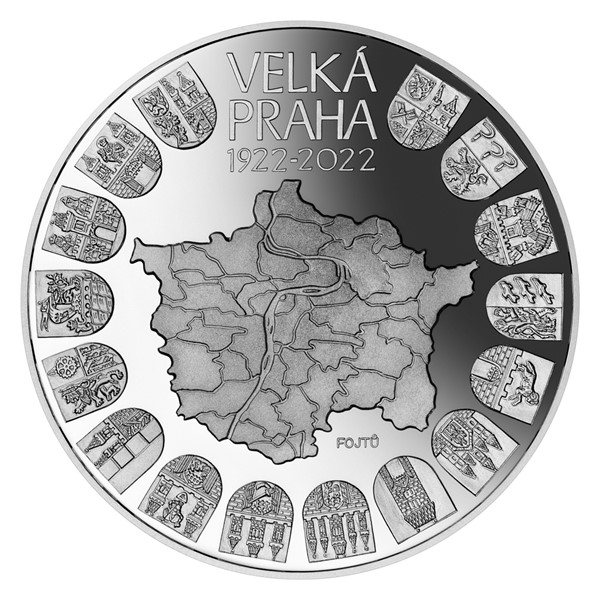Best Advice To Scanning Prague Mint Coins
Best Advice To Scanning Prague Mint Coins
Blog Article
What Is The Process To Use A Model Of A Plaster To Create A 3d Digital Model Of Gold Coins Or Medals?
It involves scanning a plaster maquette in order to create a 3-D digital representation of gold medals or coins. The equipment used is specially designed to capture the information and dimensions of the physical model in digital format. Digital replication serves a variety of reasons in the process of production. How the Scanning Process Works
3D Scanning High-resolution scanners can capture the physical dimensions and details of the model. The scanners use a variety of techniques to record exact measurements.
Capturing Surface Information: The scanner emits light or laser beams on the the plaster model. The scanner captures the reflections and distortions. This data is used to construct a model.
Data collection - The scanner collects data as it moves across the plaster model. This results in an electronic representation of the model's contours, geometrical details and other details.
Conversion to 3D Model. The collected data is processed by specialized software which reconstructs it into an electronic 3D model. This model mimics the physical dimensions and features of the maquette.
What are the motivations for the creation of the digital 3D model?
Digital 3D models can be used to reproduce the exact dimensions and details of a real model. This is essential to ensure that the final gold coins or medals match the intended appearance.
Digital models allow for easy adjustment or improvement. Designers are able to alter the 3D model but not alter the maquette that was originally created.
Compatibility with Manufacturing Processes - Digital 3D Models are compatible with a variety of manufacturing processes, including 3D printing and CNC machining, which allows the manufacturing of dies and molds to make mass production.
Digital 3D designs can be stored and used as documentation. They can be stored digitally to be used in future reference, reproductions, and historical documentation.
By scanning the model and then creating an electronic 3D model, manufacturers and designers can improve the efficiency of their production, ensure accuracy in replication and utilize advanced manufacturing technologies for creating gold coins or medals with a high degree of precision and fidelity to the original design. View the most popular Scanning and 3D Modeling Prague Mint gold coins blog info. including buy coin gold, 1 10 ounce gold coin, canadian gold maple leaf, 1975 gold penny, gold buffalo coin, sd bullion gold, gold american eagle price, gold buffalo coin, gold coins for sell, gold quarter dollar and more. 
How Can A Janvier Transfer The Gold Design Of A Coin Or Medal From The Master Hub To Working Hubs?
A Janvier machine is also called pantograph, also known as a the reducing machine. It's used to transfer the appearance of a coin medal from a master to the working center. This is a brief review of the Master Hub Creation.
The master hub is the first coin, medal or coin mold. It is made by CNC machineries, or other methods of precision.
Janvier Machine Setup
The Janvier machine has a stylus for tracing the design on the hub master, and an aide-memoire cutter that replicates the pattern.
The Janvier machine's master hub, which serves as a model from which the design will be copied, is positioned in a secure manner to the machine.
Tracing Design-
The Janvier stylus is a perfect match for the design's contours as well as the details on the master hub. The stylus captures the contour of the design as it moves across the hub's surface.
The Design of the Home
The Janvier machine also duplicates the traced pattern onto the working hub. The hub is usually made from a softer material like steel or nickel, than the hub used in the master.
The cutting tool duplicates or reduces the design of the hub in the size or scale as compared to the hub that is master. This reduction is vital for the minting procedure, since it allows the striking of coins or medals at the exact size.
Accuracy and precision
Janvier machines are operated with precision in order to ensure the exact transfer of the design from the master hub to the operating hub. It replicates every detail and contour with precision.
Quality Control
The final working hub undergoes quality checks to ensure it meets the specifications for striking and is accurate.
Further Processing-
The Janvier machine produces a functioning hub that is used in the coin and medal making process. It acts as a mold or die to create multiple coin or medal blanks that have the design transferred.
Janvier is a key element of minting, because it can accurately replicate and reduce intricate designs on medals and coins. These working hubs will then be used to create mass production of medals or coins striking the process. Have a look at the top janvier processing Czechoslovakia gold medals blog examples. including gold and silver dealers near me, american eagle gold coin 1 oz, gold coins, 1oz gold eagle coin, saint gaudens double eagle, gold buffalo coin, sell gold and silver near me, krugerrand coin, gold coins for sell, kruger rand and more.
Why And How Are Gold Blanks Of High Quality Weighed And Measured Before The Process Of Minting Begins?
This process is carried out to create gold coins and medals of top quality. This is how and why the process of preparation operates. Gold Material Selection - Only high-purity gold can be used to create blanks. Gold is refined to meet purity requirements for coins.
Gold Blanks Production - Gold is transformed into blanks by an approach known as blanking or cutting blanks. Blanking is the act of cutting planchets, discs, or disks to the shape of coins out of gold with special equipment or stamping.
Precision Weighing and Measuring
Weighing. Each blank is independently weighted to ensure it is in line with the specifications of the coin. This ensures that the coin or medal has precisely the correct amount of gold.
Measuringthe thickness, diameter, and overall dimensions of every blank are measured using precision instruments to ensure consistency and conformity to design specifications.
Inspection and Quality Control
Visual Inspection- Every blank undergoes visual inspection to identify imperfections in the surface, irregularities or impurities that could impact the final product's quality.
Rejecting Blanks That Don't Meet Standards- Blanks are rejected if they are not in compliance with weight, size, or any other quality requirements. This is to maintain the uniformity and a consistent quality.
Motivations for preparing
Consistency of Minting ProcessPrecision-weighed and measured blanks ensure uniformity during the process of minting. Consistency of weight and dimensions results in uniform striking. This results in coins or medals of similar in value and quality.
A precise gold content- The precise weight of each coin ensures that the final medal or coin has the exact quantity of pure, accurate gold.
Uniform Blanks - Avoid the occurrence of variations in weight or size that could affect the value of the medal or coin, legality or usability for trade or circulation.
Quality Assurance – Strict controls on quality during the blank preparation phase ensure that only the best blanks are used for the minting and minimizing the chance of having flaws.
Legal Compliance - Uniformity and adherence to specifications are crucial when it comes to coins designed for circulation or commemorative reasons, ensuring that they meet the legal requirements and standards established by mints or regulatory bodies.
Making gold blanks that are of good quality and with consistency are essential steps during the process of coining. They guarantee the quality and precision of high-value gold coins and medals. Check out the top rated gold blanks for Prague Mint gold coins site examples including saint gaudens double eagle, 2000 p sacagawea dollar, gold and silver bullion, double eagle coin, gold medal of olympic, 1 10 american gold eagle, gold and coin shops near me, 2000 p gold dollar, online silver buying, gold and silver shops near me and more.
Why And How Are Limited Edition Gold Coins Or Collectible Gold Coins Numbered Individually?
Limited editions or rare gold coins are usually uniquely numbered to serve a variety of purposes mostly to prove authenticity, ensure exclusivity, and enhance their appeal to collectors. Here's how and why this numbering is doneHow Individual Numbering is implemented
Sequential numbering: Each limited edition coin or collectible coin is given an unique number. The numbers are generally stamped or engraved on the coin surface or edge. This number represents the place of the coin within the collection.
Certificate of authenticity. The coins will come with a certification of authenticity, which is a match to the unique number on the coin. This certificate verifies a coin's authentic, including details on the type of coin, the composition of the metal, and minting date.
The reasons for naming coins individually
Authenticity Assurance – Each number is a unique identifier which confirms the coin’s authenticity in the limited series. Each number serves as an identifier to ensure that the coin is authentic and belongs to the authorized collection.
Exclusion and rarity - Limited edition coins that have individual numbers are seen as more rare and expensive. Collectors are often drawn to numbered coins due to their lack of availability, which contributes to their appeal and value.
Collectible Appeal- Numbered coins add a collectible appeal that allows collectors to follow and highlight particular numbers in a collection. Lower or significant numbers in the sequence could be considered more desirable or desirable.
Individual Collector Engagement Numbers encourage collectors to collect sets or acquire particular numbers. Collectors might be motivated to search for specific numbers based on their own preferences, or due to the fact that they have reached an important achievement.
Value and resale potential- Coins with unique serial numbers can have higher value on the secondary markets, especially if the serial numbers are less or they belong to a highly sought-after collection. Collectors usually value these coins for their rarity and distinctiveness.
Trackability and Documentation - Numbering allows for the tracking and documentation of each coin's history, helping in proving provenance and verifying the market for collectors.
Issuers and mints provide exclusivity and increase the appeal of collectible or limited edition coins by individually naming them. This helps to establish authenticity and increase their value to collectors seeking rare or significant items. These coins are often of particular significance and worth in the field of Numismatics. Have a look at the top Prague Mint gold medal numbering blog advice including angel coin, gold medal of olympic, 1933 double eagle, gold dollar coin 2000, gold bullion, gold and coin shops near me, apmex gold coins, silver double eagle coin, gold coin 24k price, american gold eagle 1 oz and more.